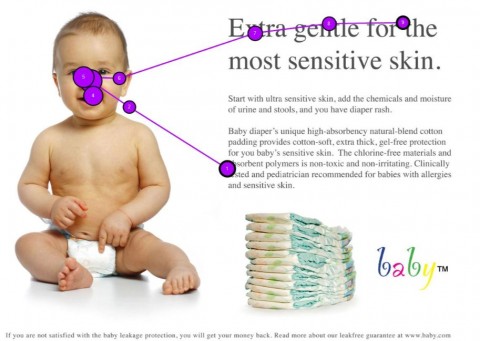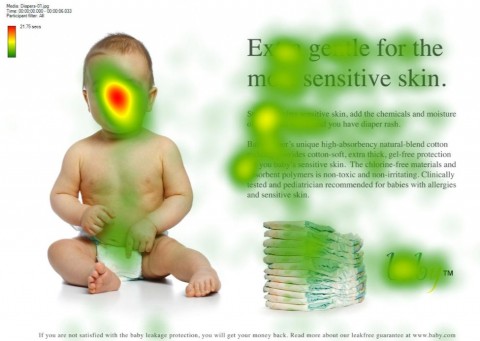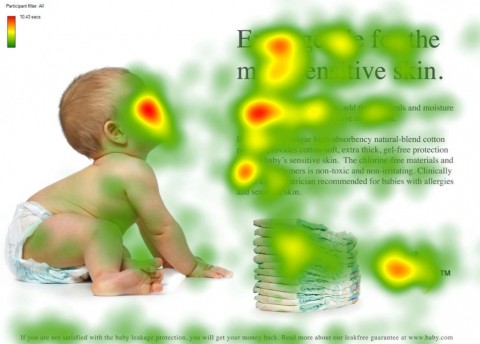Child Labor: Put That Baby to Work!
The direction a baby faces in an ads changes what people look at

Advertisers have known for decades that pictures of babies attract attention and hold the viewer’s gaze. That’s why you often see pictures of babies – cute, startled, smiling, frowning – in ads that have nothing at all to do with baby products. An interesting study from Australia shows what takes a baby-picture ad from merely attention-getting to effective.
Usability specialist James Breeze conducted a study of how people view baby ads with 106 subjects (Updated link: You Look Where They Look.). He used eye-tracking technology to measure the direction and duration of the subjects’ eye movements. The image at the top of this article is the measured activity for a single user. (In each case, the subjects started viewing the ad in its center.)
When the subjects were presented an ad with the baby looking straight out of the page, the heat map below shows that viewers fixated on the baby’s face, and gave quite a bit less attention to the headling and ad copy:

No big surprise, perhaps, but watch what happens when a side-facing baby image is positioned to “look” at the ad’s headline:

We see that the baby’s face is still a major hot spot, but now the ad headline and copy get far more attention! Breeze concludes, “In advertising we will look at what the person we see in an ad is looking at. If they are looking out at us we will simply look back at them and not really anywhere else.”
The neuromarketing takeaway is simple: a face in your ad will attract attention, but be sure the face is looking at what you want the viewer to see!
